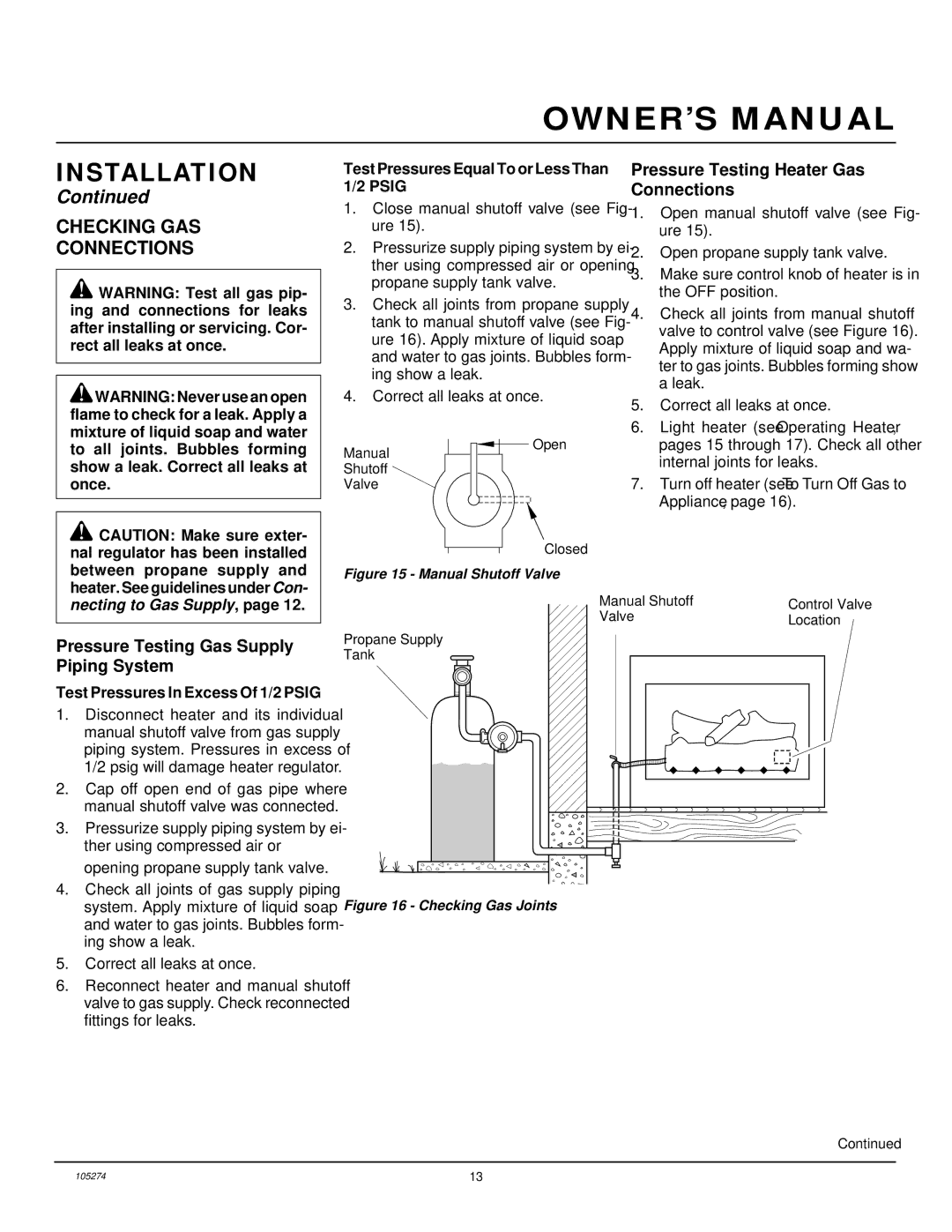UNVENTED (VENT-FREE) PROPANE/LP GAS LOG HEATER specifications
The Vanguard Heating Unvented (Vent-Free) Propane/LP Gas Log Heater is a remarkable home heating solution that combines efficiency, convenience, and aesthetic appeal. Designed to deliver warmth without the need for traditional venting, this heater stands out for its innovative technology and user-friendly features.One of the main attractions of the Vanguard unvented gas log heater is its ability to provide consistent heat while conserving energy. The unit operates using propane or LP gas, making it an excellent option for homes without access to natural gas. With a high heat output, it efficiently warms spaces while potentially reducing heating costs compared to conventional systems.
The design of the Vanguard heater incorporates advanced catalyst technology, which ensures that combustion is clean and efficient. This technology minimizes emissions, making it an environmentally friendly choice for homeowners concerned about their carbon footprint. Furthermore, the heater is equipped with an oxygen depletion sensor (ODS) that automatically shuts off the gas supply if oxygen levels fall below safe thresholds, ensuring peace of mind for users.
Aesthetically, the Vanguard model features realistic log designs that replicate the appearance of a traditional wood-burning fireplace. This adds warmth and charm to any living space. The adjustable flame height allows users to customize their heating experience to suit their needs or mood. The controls are designed for ease of use, allowing for simple operation whether the heater is used for primary warmth or supplemental heat.
Safety is a key characteristic of the Vanguard unvented gas log heater. Besides the ODS mentioned earlier, the heater is built with durable materials that ensure longevity and reliability. It can be installed in various locations, including bedrooms and living rooms, as long as the manufacturer's guidelines are followed.
Installation of the Vanguard heater is relatively straightforward, requiring minimal modifications to existing spaces. This flexibility makes it appealing for both new constructions and retrofits. Additionally, the absence of venting means that installation costs are often lower than with vented units.
In summary, the Vanguard Heating Unvented Propane/LP Gas Log Heater combines advanced technology, stylish design, and crucial safety features, making it a viable choice for those seeking efficient indoor heating solutions. Its ease of installation and operation further enhances its attractiveness to modern homeowners. Whether for cozy family gatherings or quiet evenings at home, this heater is an excellent investment in comfort and warmth.

